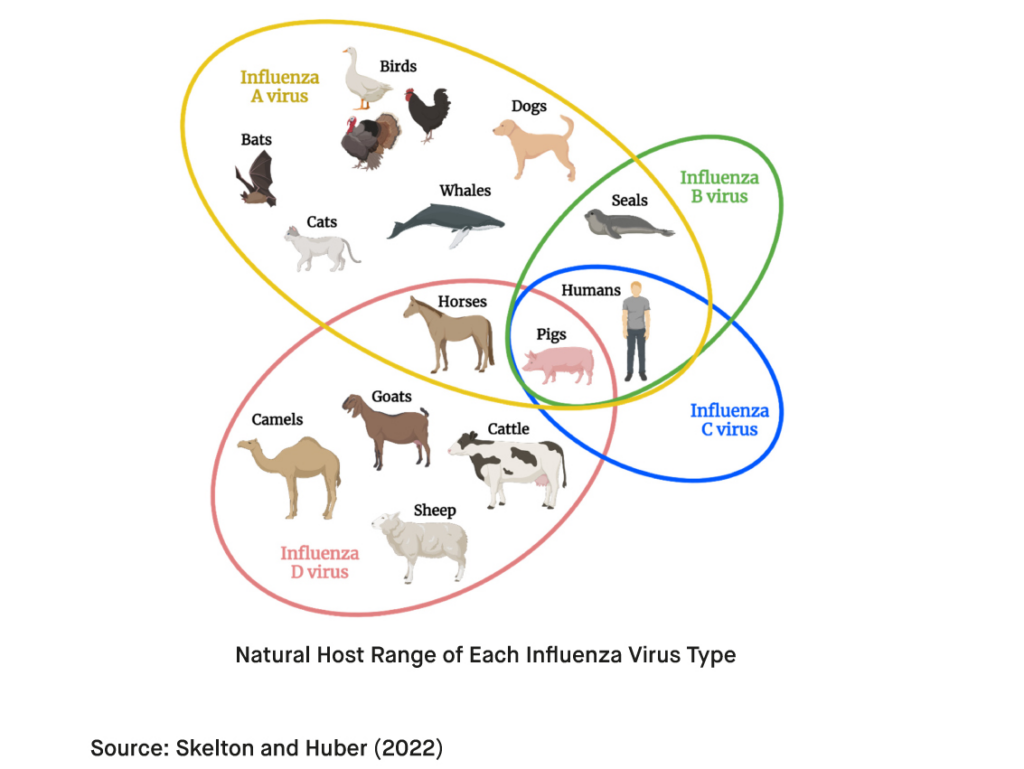Discover the intricate world of influenza viruses, encompassing four distinct types: A, B, C, and D.
While influenza A and B are widely known, influenza C and D often remain enigmatic to the general public. In this comprehensive guide, we delve into the characteristics, transmission, prevention, and implications of each type, shedding light on their unique attributes.
Section 1: Understanding the Four Types of Influenza
Influenza A: With its global impact and potential for severe outbreaks, influenza A is the most prevalent and significant type. We explore its various subtypes, including the notorious H1N1 and H3N2, and highlight the specific demographics most vulnerable to its complications.
Influenza B: Often regarded as the “lesser-known sibling,” influenza B carries its own set of implications. We examine its distinct genetic makeup, seasonal patterns, and the significance of influenza B vaccination, particularly for high-risk groups.
Influenza C: While comparatively mild, influenza C remains an intriguing piece of the influenza puzzle. We shed light on its transmission patterns, the populations it primarily affects, and why it often flies under the radar of public awareness.
Influenza D: Unlocking the secrets of influenza D, a virus primarily impacting livestock but capable of infecting humans, is crucial for understanding zoonotic diseases. We discuss the rare instances of human infection, shedding light on the potential risks and implications.
Section 2: Key Differences and Similarities
By exploring the genetic and antigenic differences among the four types, we gain insight into the mechanisms behind their varying pathogenicity. Detailed diagrams and explanatory visuals provide clarity, allowing readers to grasp the distinctions at a deeper level. See article HERE
Section 3: Prevention and Vaccination Strategies
The importance of vaccination cannot be understated in the battle against influenza. We delve into the development process of influenza vaccines, emphasizing the significance of strain selection and the continual need for annual vaccination. Additionally, we highlight the benefits of broader community immunization for reducing influenza’s overall impact.
Section 4: Insights into Transmission and Contagiousness
Understanding how influenza spreads is key to curbing its dissemination. We provide a comprehensive analysis of the transmission routes, encompassing respiratory droplets, contact with contaminated surfaces, and potential airborne transmission. Practical tips for reducing transmission risks in various settings, including home, workplace, and schools, are also covered.
Section 5: Antigen Testing Advancements
Advancements in rapid antigen testing have revolutionized influenza diagnosis. We explore the latest technologies and methodologies, emphasizing the significance of quick and accurate detection. Backed by scientific evidence, we outline the benefits of antigen testing in guiding appropriate treatment and implementing effective control measures.
Conclusion: The differences between influenza A, B, C, and D
By unraveling the differences between influenza A, B, C, and D, we gain a comprehensive understanding of these complex viruses. Equipped with this knowledge, individuals, healthcare professionals, and policymakers can make informed decisions regarding prevention, vaccination, and control measures. Together, we can combat the diverse challenges posed by influenza and safeguard public health.
















